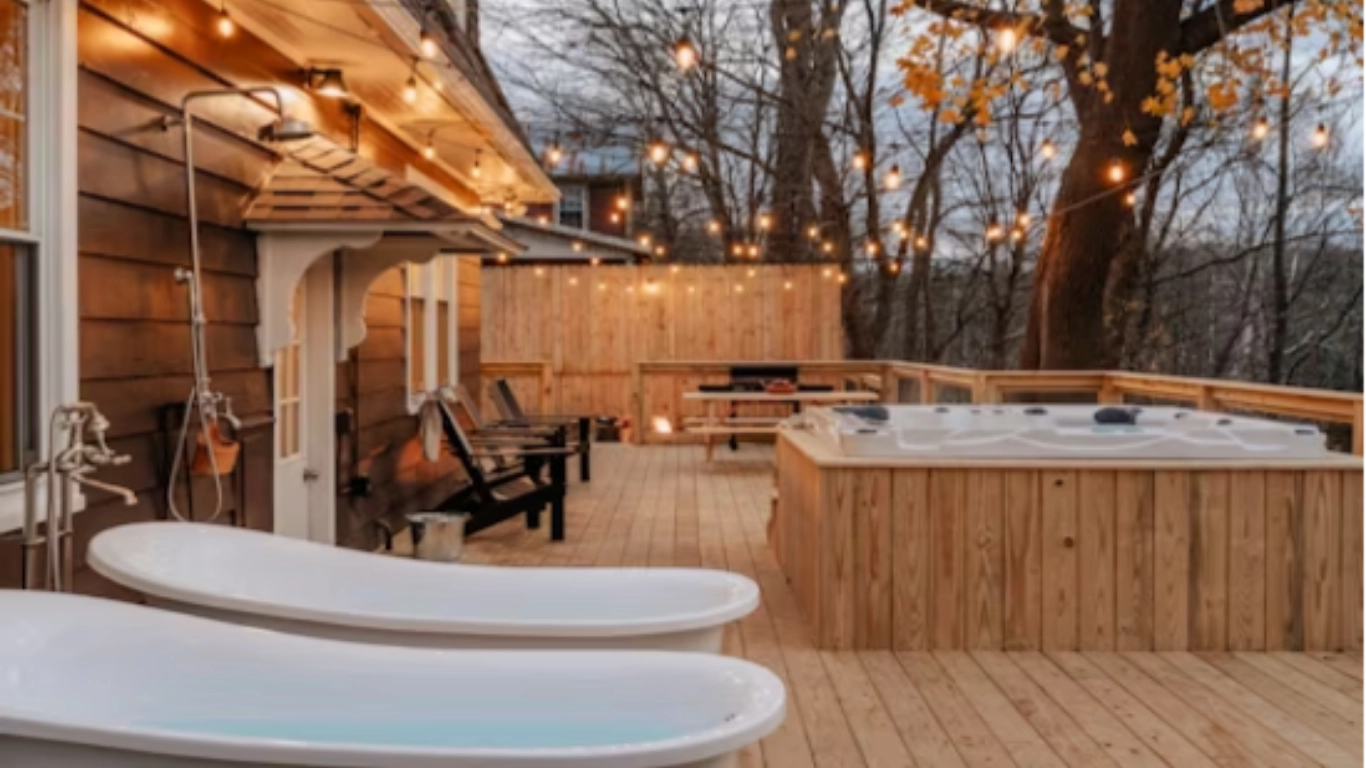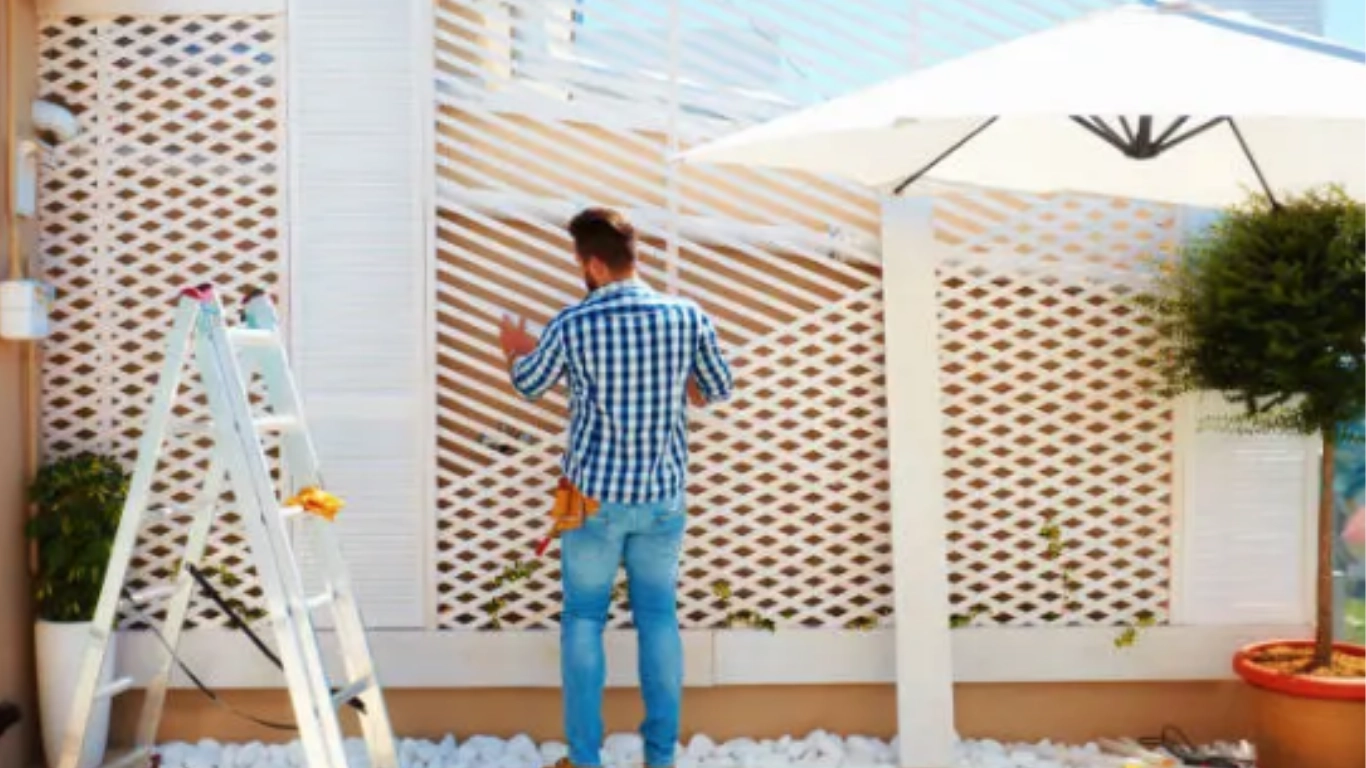A good transition from your Low Maintenance Deck Border to the garden with continuous upkeep should not be considered a weekend-work-nightmare. Whether you’re a busy professional with varying work commitments or someone who prefers drinking coffee on the deck on Saturday mornings while conspiring about what to do with his life instead of weeding around it, a well-thought-out, low-maintenance planting border can best support his backyard.
An ideally planned deck border is a feast for the eyes, offers a gorgeous connection to the outdoor living area, and is of low maintenance. Let’s have a look at how you can get this right! The idea is to have something that brings an attractive complement to your property with merely one or two attempts at care throughout the year.
Why a Low-Maintenance Deck Border Matters for Garden Landscaping
Think of this from a practical perspective: what do you expect from your deck edge? The border does more than ensure the beauty of an area: the practical side of a border guarantees a happy outdoor experience.
Your border typically acts as a transition zone that softens those hard ouch-lines where your deck meets the garden. This transition allows for visual flow in the setting and makes the entire outdoor setting appear cohesive rather than two spacelike patches thrown awkwardly next to each other. While good design of the border can mitigate drainage problem scenarios by stopping water from pooling around your deck’s foundation and channeling it towards areas where it will work.
Borders also act as a protective barrier for your deck structure. By creating some separation between soil and timber, you help prevent moisture-related issues and also reduce pest issues that arise on occasions when garden beds are too close to wooden structures.
Best Materials for a Durable, Low-Maintenance Deck Border
With low-maintenance border systems, your material choices will almost fully dictate the degree of ongoing maintenance you need to invest time in. Natural stone is one very popular option among Australian homeowners, and rightly so. Sandstone, bluestone, or even recycled brick can all be used to build attractive borders that get better with age and weather well in our variable climatic conditions.
More modern options include composite decking edge board for clean lines and excellent durability. The materials resist moisture, insects, and UV while retaining their appearance with little maintenance. They work equally well while you try to make geometric patterns or contemporary-style layouts that complement modern deck designs.
Another fine option for low maintenance would be concrete sleepers, especially for those working with slopes or with fairly big height differences between their decks and garden levels. Concrete sleepers could be placed in any configuration desired, then painted or stained to harmonise with the existing colours of the outdoors.
Smart Design Tips for a Low-Maintenance Deck Border
If you try to build a low-maintenance border, you should make smart design choices that fit nature rather than fight it.
- Take into consideration the mature growth of the plants you are incorporating at the start and space them accordingly. It’s an excellent allowance for solving overcrowding issues later that need constant pruning or relocating plants.
- Poly-chromed mulched flowerbeds offer textural interest versus the bulking down of maintenance. Keeping weeds off, holding soil moisture, and breaking down slowly so that the soil is nourished are the proper mulching ways. So, always work with bigger wood chips or decorative gravel, which rarely need replenishing.
- On the other hand, having defined planting zones within the border allows for clear maintenance parameters to be discussed. Let the plants go wild? Or help them along with a restraint or two—low retaining elements or slight level changes to keep the zones distinctly separate and easy to manage.
Best Plants for a Low-Maintenance Deck Border and Year-Round Garden Appeal
Being very particular in choosing the plants can make or break the low-maintenance theme. Use those native Australian plants, which are aimed at adapting themselves to the local weather and rainfall conditions. As a general rule, such plants need less water, fertiliser, or pesticide control once established.
You might combine evergreen shrubs for structure and ornamental grasses for movement and texture, plus seasonal flowering plants for colour. Westringia, various grevilleas, and native violets can really create some lovely displays and thrive with the least amount of care.
In doing professional commercial gardening, the most important thing is to keep plants with similar water and light needs grouped together. Such a zoned approach will make your care more targeted yet efficient, eliminate any unnecessary stress on plants, and thus contribute to plant success instead of failure.
How to Install a Low-Maintenance Deck Border for Long-Term Success
Installing a low-maintenance garden begins with proper installation.
- At first, one needs to consider proper drainage for the whole border area. Bad drainage leads to plant issues, including structural problems or maintenance matters that could have been avoided with proper preparation.
- Good foundations must be made when dealing with hardscape elements such as stone or concrete. Any border that shifts and settles over time will have to undergo repairs and adjustments that negate the very meaning of going for low maintenance.
- Irrigation, if within budget, can be considered. Even drought-tolerant plants can benefit from adamant watering during establishment, and a simple drip system can do that, as well as save water.
How Low-Maintenance Deck Borders Boost Property Value and Outdoor Living
Border planting round a deck will make it look more attractive, thus valorising the property. Landscaping improvements that enhance outdoor living spaces are consistently viewed favourably in commercial property valuations, as they demonstrate attention to detail and increase the usable area of the property.
The primary thing in joinery is a border that looks like it was made with thought and deliberately integrated into its environment, rather than an afterthought. One would imagine results would be very professional-looking had an installation occurred; however, they can certainly be built at a fairly professional level without such installation, but they must definitely be carefully planned with materials that age well.
Seasonal Deck Border Maintenance Guide for a Low-Care Garden
Such seasonal gardening activities can prolong the life of even a low-keep-it-simple border garden.
- Fall maintenance should consist of cleaning down gutters, mulching, and winterising irrigation systems. Should another freezing spell hit Kentucky, tender plants will need to be covered.
- In spring, inspect and repair any broken irrigation system lines, refresh mulches or apply pre-emergent, and prune as necessary.
- Summer maintenance should entail one or two deep watering sessions during heat stress and deadheading spent flowers so that more flowers will grow and bloom.
Autumn opens up a chance to plant new additions into the soil while rainfall increases. Normally, a hands-off approach applies to winter for most low-maintenance borders, although it pays to check for storm damage or drainage issues after a bout of severe weather.
Ending Notes
A low-maintenance deck border is quite simple with some thought in planning and a wise choice of materials. With a good choice of tough materials and plants that fit well with their environment and good designing principles, you can make a nice transition from your deck to your garden, enhancing its outdoor living though not requiring much attention.
The planning stage made perfectly right with the best materials will see you better off in maintenance wear and tear and enjoyment of the outdoor space. Why not draw up some plans for your low-maintenance border project? Your future weekend-relaxing self will shower you with gratitude for the positive thoughts you put in today.







